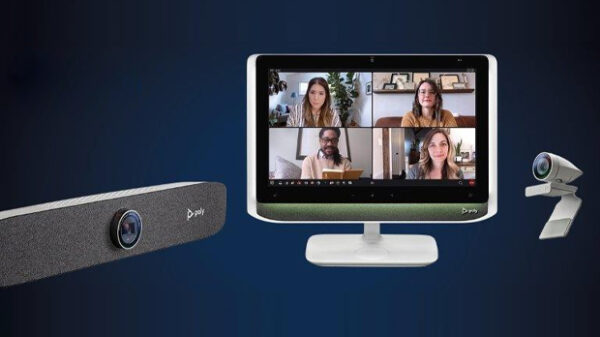
The Avaya Video Collaboration Solution for IP Office can be used virtually on any device – PC or Mac, laptop, smartphone or tablet. (Photo from Avaya website)
Avaya has introduced in the market an all new video collaboration solution designed specifically for the budget-constrained small and medium sized enterprise (SME) segment.
Known as the Avaya Video Collaboration Solution for IP Office, the new product supports 8 combined desktop/mobile users and room systems in one conference. Avaya says the system can be used virtually on any device – PC or Mac, laptop, smartphone or tablet. Users can see participants in HD video, share and annotate documents, chat with attendees in real-time.
Avaya claims the solution is easy to deploy and is unique in its ability to deliver BYOD (Bring Your Own Device). It features rich collaborative capabilities that help increase productivity, enhance customer service, and lower the overall cost of doing business.
The system is designed to help solve businesses’ increasing problem of looking for innovative, yet efficient ways to work together regardless of geographical location.
Avaya also offers the following new video collaboration capabilities to enterprises and SMEs: Avaya Aura Conferencing with Avaya Flare Experience 1.1; the high-definition, low bandwidth Scopia family which is locally manufactured in Cabuyao, Laguna; and Avaya Client Application with Microsoft Lync, Outlook and Office integration.
Leveraging on Avaya’s acquisition of Radvision in June 2012, these open, standards-based solutions deliver low total cost of ownership and allow customers to protect existing investments in unified communications and video conferencing while evolving to next-generation real-time collaboration.
“Over the last three years, we gradually saw that video has really become the next voice. That is why we’re really looking to facilitate the industry,” said Chong Win-Lee, Managing Director of Avaya ASEAN. “What we’ll do is to make video a ubiquitous means of communications, a ubiquitous means of collaboration. We want to extend it to everyone else. We will make video more acceptable, more simple and more affordable.”
This is the reason why Avaya partners with the country’s biggest telecommunications firm, Philippine Long Distance Telephone Company which was also announced during the media briefing held at the Shangri-La Makati. “We are launching the collaboration with PLDT to really excel the functionalities that video brings to the Philippines, and to experience the increase in efficiency,” said Win-Lee.
Believing that video is going to be a reality in every business, whether large or small, and that users will benefit from it, Ed Doctolero, Country Manager of Avaya Philippines, said, “We will know how users can be affected by strategic tools as they move forward with their collaboration strategy and services transformation strategy between their respective organizations, and what benefits they can realized out of this video collaboration with their respective organizations.”
Doctolero added that they trained their resellers around positioning, talking with customers, and how they will position the benefits of this solution to their customers.
However, as they look positively with the performance of the solution, Doctolero mentioned challenges that they encountered with their customers, particularly the small and medium businesses (SMBs). “There are still SMBs that cannot afford the video collaboration structure. It is the challenge from the CAPEX standpoint,” said Doctolero. “This is the reason why we have to offer an alternative model, offering this on a cloud or offering this as a utility project.”
“To do that, continues Doctolero, they must have controlled budget in the service provider, that’s why we partnered with PLDT to offer SMEs who do not have the CAPEX.”
The second challenge, according to Doctolero, is that companies, especially the SMEs, don’t have the pool of talents, internal talents that can configure, manage and implement this type of solution in the enterprise. “They will depend on experts, from us, from Avaya and from other departments and, in this case, on PLDT to guide them in terms of how to take advantage of the transition, how to integrate that transition, and make it part of the business transformation strategy, and how does it play in the overall business collaboration. This is the value that PLDT is bringing to this partnership, to cover and address all those areas,” he said.

















































































































